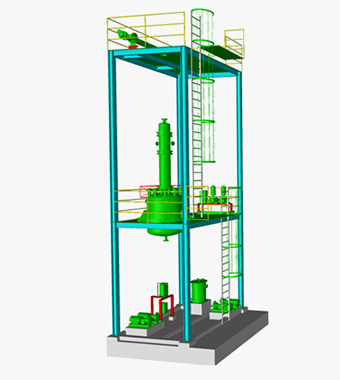Sulphuric acid concentration – for chlorine drying
Chlorine is produced by the electrolysis of an aqueous sodium chloride solution (NaCl). The chlorine gas that develops at the anode is saturated with water. To extract the water, the chlorine gas is sent through a packed column in which concentrated sulphuric acid dehydrates the chlorine, leaving a water-free chlorine gas.
The diluted sulphuric acid carries small amounts of chlorine and can be recovered almost completely by concentration in an evaporation system. A typical application is shown in the below flow sheet.
The highly corrosive properties of the sulphuric acid call for highly resistant materials. Bertrams, as a specialist for highly corrosive media under high temperatures, has expertise in such materials and will always choose the best material, so optimising both the lifetime of the plant and investment costs.

KEY FEATURES
- For H2SO4 concentration up to 96/97% wt
- Capacity 1 to 1000 tpd (100 %)
- High recovery yield > 99.7 %
- Energy efficient through heat recovery
